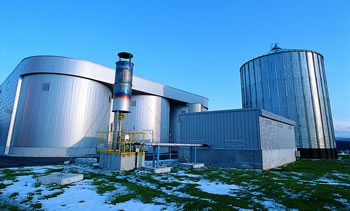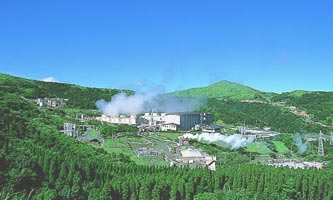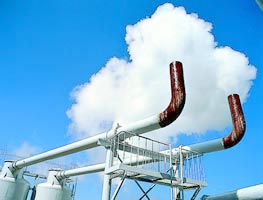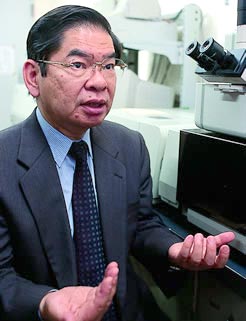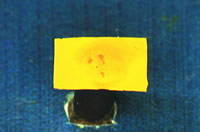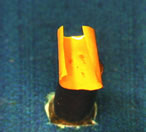| Web Japan > NIPPONIA No.28 > Special Feature* |
|
|
|
NIPPONIA No.28 March 15, 2004
|
|
Special Feature*
From kitchen scraps to electricity
Biomass power generation
When the garbage incinerator in Takikawa, Hokkaido showed signs of severe aging, the city began discussions with five neighboring municipalities. Since October 2003, the local governments have been generating electricity from a biomass of kitchen scraps.
Non-biodegradable matter is removed from the kitchen scraps. Then they are placed in storage tanks, where they ferment and emit methane gas. The gas runs an engine that generates electricity. After the decomposition is complete, the remaining matter is used as a fertilizer. Takikawa was the first place to try such a system in Japan.
By using kitchen scraps completely and effectively, the facility also raises residents' awareness about the environment.
Under the volcanic archipelago
Geothermal energy
There are tremendous amounts of geothermal energy deep under Japan's volcanic islands. This energy can be harvested by extracting hot water and steam from thousands of meters underground, then using the steam to turn electric turbines. In this way, energy under the ground is used as a resource.
Japan has 17 such generating plants. The biggest is the Hatchobaru Geothermal Power Station in Oita Prefecture, Kyushu, on a plateau 1,100 meters above sea level. The plant has a capacity of 110,000 kW, enough electricity for about 37,000 homes (since the average home requires about 3 kW).
One advantage of a geothermal power station is that, compared to a power station burning fossil fuel, it emits only about one-twentieth of the carbon dioxide for the same amount of electricity, impacting little on the global environment.
The ultimate use of solar power
Sunlight makes resin "come alive"
A new type of resin bends into a U-shape when exposed to ultraviolet rays, then returns to its original shape when exposed to visible rays. The resin is made of highly functionalized polymer materials, and was discovered by the research team of Professor Ikeda Tomiki at the Tokyo Institute of Technology.
The Institute examined a substance called azobenzene, which contracts in reaction to ultraviolet light, and looked closely at the orderly molecular structures of liquid crystals. After much research, it succeeded in developing a resin that has the same molecular structure as azobenzene liquid crystals and contracts in an orderly alignment. The resin surface contracts as if it were alive, when exposed to ultraviolet light.
Unlike solar cells that convert light energy into electricity, the resin wastes minimal energy because it converts the light directly into kinetic energy. This is why it is now attracting attention as a material that could open the door to the ultimate use of solar energy.
|
|||||||||
|
||||||||
|
||||||||
|
